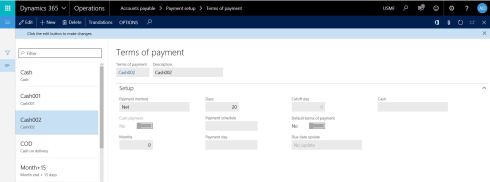Hello Friends,
It has been quite sometime (well a lot of time!) that I posted something on this blog. Between my last post and this post today, there have been tremendous changes on the Dynamics AX front, which by a word is obsolete and no longer exists, and was renamed to AX 7 then to the now Dynamics 365 for Operations. Not just the name, but a lot of things have been improved which we as consultants have been longing for. One of that is the one that I’m going to touch upon, that’s the Cross company data sharing.
At some point in our consulting careers, we would have encountered one question (must have, I would say!), if you have done any of larger implementations with a lot of legal entities (companies) that if it is possible to share the data like Vendors, Terms of Payment, Customers across the legal entities. Well until Dynamics AX 2012, the answer was to use virtual companies and add the legal entities which would share such business data. It used to do the trick, and resolve the requirement.
With the advent of Dynamics 365 for Operations, Microsoft has took this up a little forward and introduced the “Cross-company data sharing” . This almost similar to the virtual company concept that Dynamics AX had so far, with minus of the need of creating a virtual company, plus with the feature of deciding which fields could be shared. Below is one example of enabling master data sharing on Terms of Payment, one of the most asked business data to be shared across legal entities.
The “Cross-company data sharing” navigation is under System Administration -> Setup -> Configure cross-company data sharing.
I have just created a sample data sharing policy to which I would be adding the PaymTerm table.

Add the table using the “Add” button. If you remember the table name, you could simply type that in. Else, you can browse through. I’m just going to type in the table name here. 
The drop down would show you the tables matching the keywords. Once you select the table, it would show if the table is enabled to “Save data per company”, “Has unique index” and if it has been “Not shared yet”.

Click on “Add table” and you can see the table being added. If you expand it, it would have all the fields that table has. You can choose which fields to be shared versus not to be shared. I have encountered this in one of my implementations, where the Singaporean company (parent company) wanted the payment terms to be shared across all the legal entities. However, for a French subsidiary, due to the regulatory requirements and since they had to maintain their own set of Chart of Accounts, and since there was a cash terms of payment, we had to separate the French company out of the virtual company that we created for data sharing. With the Cross company data sharing feature in Dynamics 365 for Operations, this can be easily handled by simply disabling the fields that would enable cash payment feature on the payment terms and keeping them specific to the legal entity.

After the table and the required fields have been added, you can then proceed to add the legal entities.

After all the above work is done, then the magic begins, by clicking on the “Enable” button, which enables the policy.

Of course, I would want to!
After the policy has been enabled, you can see the sharing issues by clicking on the “Find sharing issues” button. Below is one example. The description is different in Company 1 (USMF) and Company 2 (USSI)

Same way, before the policy has been enabled, I created a term with name as Cash002 in USMF. At this point, since the policy is not enabled, the data is not copied into USSI legal entity.


After the policy has been enabled, the new payment term copies over to USSI.

This way, you could utilize the Cross company data sharing to maintain same set of business data at one legal entity, which could simply copy the data over to the legal entities which are part of the policy. This is a huge benefit for the customers as this reduces the overhead of maintaining the same data of data in 2 different entities. Big thumbs up to Microsoft for coming up with this innovative feature.
I’m sure you’d have more questions regarding, please feel free to comment on the post.
Hello,
I am new to Dynamics 365 for operations. I am trying to export D365 data to the csv using code.
I am using ODataUtility for accessing entities.
Please can you tell me how to that?. also how to access different company data using Data Entitles.?
LikeLike
Table sharing is limited to tables that do not fall under table group “Main table”
LikeLike
Thanks Arun. Yes indeed it is. I have missed mentioning it in the blog. Thank you for pointing this out.
LikeLike
As of the current version, Microsoft has allowed vendor and customer data sharing across companies, although there are some considerations that come along with it.
LikeLike